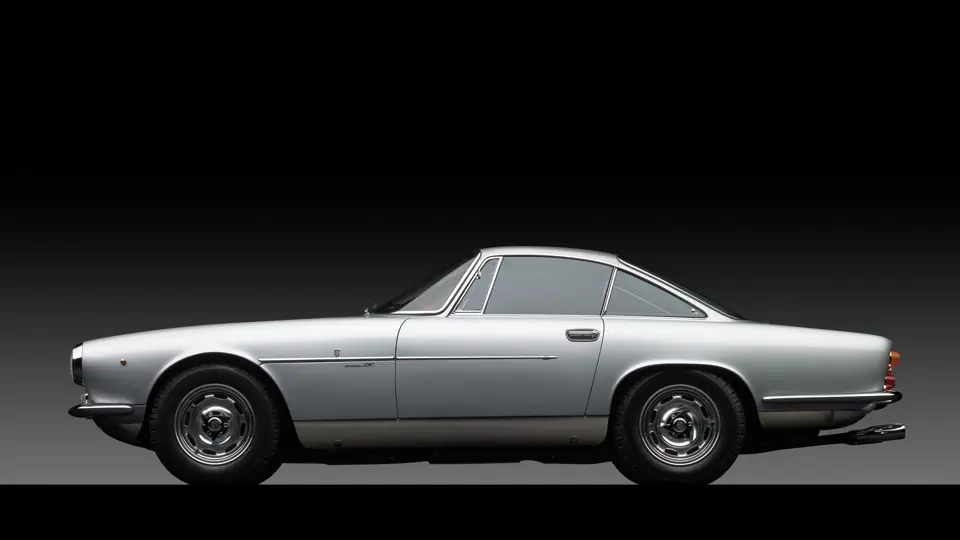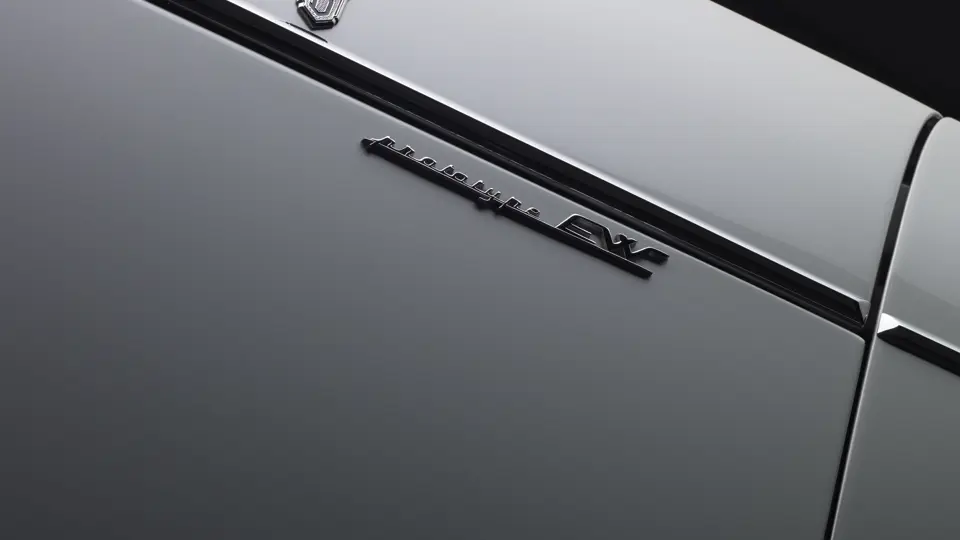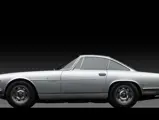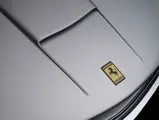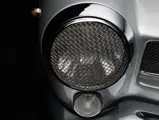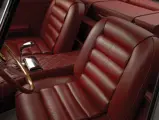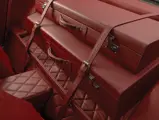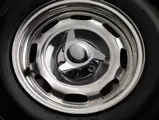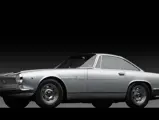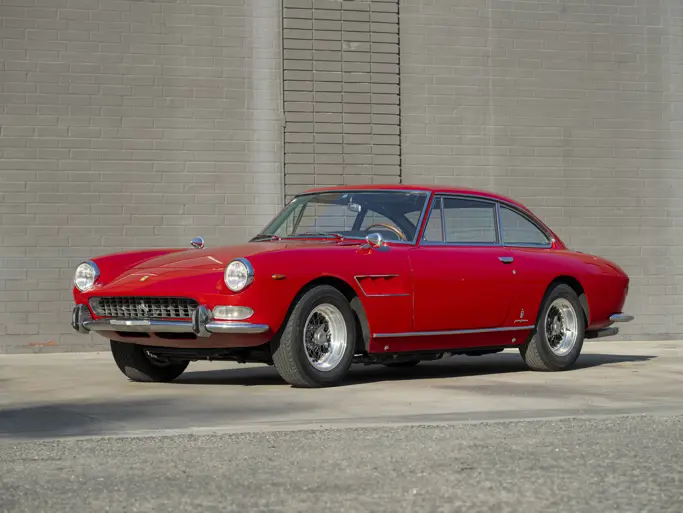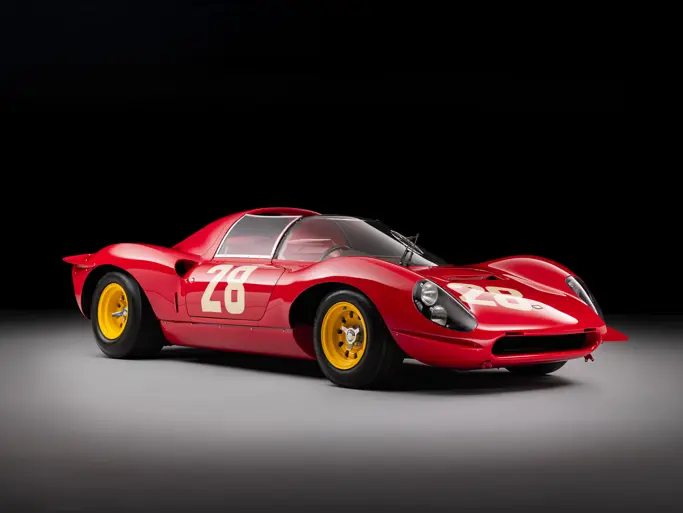
1959 Ferrari 250 GT SWB "Competition" Berlinetta Speciale by Bertone
{{lr.item.text}}
$7,040,000 USD | Sold
{{bidding.lot.reserveStatusFormatted}}
- The symphonic marriage of a racing Ferrari with bespoke coachwork
- Bodied in alloy and on a competition racing chassis
- The 1960 Geneva and Turin show car
- Multiple Pebble Beach Concours d’Elegance awards
In the fledgling early days of Ferrari’s history in Northern Italy, many different coachbuilders were utilized to construct bodies on the company’s chassis. Countless beautiful and vastly different motor cars were produced in this period, with each different than the next, to a greater or lesser degree. From the color and brightwork, to the front-end treatments, engine specifications, and interiors, well-heeled owners could specify precisely what they wanted, frequently in direct conversations with Enzo Ferrari himself and in personal trips to the factory. It was not unlike having a bespoke suit constructed by a fine Italian tailor: one’s personality, style, and preferences were all clearly visible in the finished product, as was the craftsmanship of the coachbuilder who brought the design to life.
Of the variety of designs created in the period, Pinin Farina would eventually gain Mr. Ferrari’s favor as a preferred design house for the Modenese marque. Meanwhile, the “Prancing Horse” was gaining tremendous momentum on race tracks the world over. The short-wheelbase 250 GT model, in particular, emerged victorious at the Tour de France from 1960 to 1962, at Goodwood in 1960 and 1961, and, most notably, in its class at the 24 Hours of Le Mans those same years. Legendary racing driver Stirling Moss adored the platform and said, “As a grand touring car for really serious road racing, it was quite difficult to fault, in fact.”
The 250 GT SWB was an automobile that could be driven to the race track, easily decimate the competition, and then be driven home with ease at breakneck speed, while the driver was swaddled in fine Italian leather. By this time, Pininfarina bodies had become the norm for Ferrari, and the SWB was regarded by many as the finest Ferrari built to date. Although there were detail differences from car to car, the 250 GT SWB was fundamentally a standardized design. However, that did not stop the demand for custom coachwork. Six chassis utilized custom bodies, with four of those being designed by Pininfarina and the other two being built by Carrozzeria Bertone.
Offered here is the first Bertone-bodied car, chassis number 1739GT; it is a motor car with an incredibly unique and forward-thinking design. Auto d’Epoca described the car as “arguably the most spectacular and important of coach built Ferraris—combines classic Ferrari elements of sensuous form with a racing soul.”
At Bertone, this chassis was graced with a one-off body that was designed by an individual who would become a hugely influential automotive designer, Giorgetto Giugiaro. At just 21-years-old, Giugiaro gave 1739GT a variety of unique exterior and interior options that would further distinguish it from other SWB models that were produced at the time. Regardless of his youth, it was evident that Giugiaro had an eye for design, and the public’s stunned reaction at the first glimpse of the car at the 1960 Geneva Salon clearly helped improve his stature in the industry. Giugiaro would go on to work at Ghia before his own firm, Italdesign Giugiaro, cemented his successful career. He is credited with designing many notable sports cars, including the Iso Grifo, the BMW M1, and both the Maserati Ghibli and the Bora.
As with all cars of one-off coachwork, 1739GT enjoys fascinating provenance and was commissioned by Dottore Enrico Wax, of Genova, Italy. As one of the wealthiest men in Italy, his company, Wax and Vitale SpA, was primarily known for importing alcohol into Italy. Additionally, Wax was a personal friend of Enzo Ferrari, and he owned many vehicles bearing the Cavallino Rampante.
Of course, this was not the first car commissioned by Dottore Enrico Wax, as he was well-known for ordering Ferraris for his personal use, which was facilitated by his friendship with “Il Commendatore.” All of these cars were ordered as speciales, and they had a multitude of unique features. He liked extensive brightwork, stainless steel, and polished nickel and chrome, which is evident throughout all of the Ferraris he commissioned, including 1739GT.
The story behind the commissioning of 1739GT came from former Ferrari Vice President Amerigo Manicardi, who related that Wax had expressed interest in a speciale during a meeting with Enzo at the factory, if he would allow him one of the first short-wheelbase chassis that were then under construction. Both men walked to the Competition Department, where Enzo pointed to the first chassis in a line of just three. Enzo said that even though this specific chassis was earmarked as a Works team car, it would instead be immediately assigned to Wax’s account.
Fitted with a brushed stainless steel roof, rockers, and front and rear valences, there was no doubt to even those unfamiliar with the marque that this was something special. At the front, a one-off wire mesh was constructed, headlights were fitted, and a Ferrari badge that was larger than usual was installed on the hood. To many Ferraristi, this design looks somewhat akin to the later 250 GT/L ‘Lusso,’ even though this Ferrari would predate the Lusso by three years and was drastically different to what was being produced at the time. Another interesting detail is the installation of a “clam shell” style hood, which allowed the hood and fenders to be flipped forward to expose the entire engine and front portion of the chassis. The front three-quarter panels on either side of the body were adorned with badges that read “Prototype EW,” proclaiming the uniqueness of this vehicle to all who were unaware.
The interior was lavish and adorned with rolled, pleated, and fully adjustable folding seats, a unique “pistol grip” gear lever, electric windows, and a full set of fitted luggage. The speedometer and tachometer were placed centrally on the dashboard, directly over the transmission tunnel, which was yet another design that would help to influence the Lusso. Even in terms of previous special-bodied Ferraris, this interior was quite special, and it was undoubtedly the height of automotive elegance at the time.
Chassis 1739GT would retain all the characteristics of a Ferrari Works racing car, even though it would likely remain in road use. This example was dressed with various competition details, including velocity stacks; an aluminum firewall; a drilled transmission mount, which helped to save weight; polished leaf springs; and solid spring bushings. The intake and exhaust ports of the cylinder heads had also been ground out and polished, amongst other options. Chassis 1739GT was also the first Ferrari to be fitted with SNAP exhausts. But perhaps the most notable performance accessory is the red cam covers, which are similar to those affixed to the 250 Testa Rossa, and this is the only known GT to be equipped as such.
According to noted Ferrari historian Marcel Massini, 1739GT was originally finished in Bianco Perlato (white), a color supplied by Wax, with a brushed stainless steel top and a Connolly leather interior in Turquoise Green (VM 3476). When shown at the Geneva Salon in 1960, the mechanical components had not yet been completed, and it is believed that just the body and chassis was shown. Before it was delivered to Wax, Bertone showed the car once more after its completion, at the 42nd Torino Motor Show in November of that same year.
In 1982, the car was restored to its former glory. The subsequent year, 1739GT was voted Most Elegant of Show at the 1983 Pebble Beach Concours d’Elegance, speaking to the timelessness of its design. The car was featured in an article that chronicled the history of both Bertone-designed, short-wheelbase 250 Berlinettas in Automobile Quarterly in August of 1991.
Chassis 1739GT’s present restoration was concluded over a five-year period. This restoration saw the car once again refinished to an elegant combination of silver over a red leather interior, with all of the vehicle’s original and unique features.
For the last decade, 1739GT has resided in an important private collection. It returned to Pebble Beach with its current owner in 2004, where it took Second in Class. Just two days after, it was shown at the Ferrari Club of America International Concours at Monterey, where it received a Platinum Award. Two years later, 1739GT would return to Monterey, California, once more, where it was shown at The Quail. It was shown again at the 16th Cavallino Classic in January 2007, where it would receive yet another Platinum Award. The current owner also took the time to obtain Ferrari Classiche certification for the car in 2009, only adding to this car’s illustrious provenance and confirming its mechanical authenticity.
Today, the Ferrari 250 GT SWB is considered to be one of the greatest dual-purpose sports racing cars of all time. This example takes the historical significance of the SWB one step further, as it combines one-of-a-kind coachwork with one of the greatest sports car underpinnings of all time and a chassis that was originally intended for competition use. Clearly influential to future Ferraris, 1739GT introduced a number of styling features that were celebrated within this model before they became standard on the Lusso.
According to Ferrari historian Stan Nowak, this is “possibly the one Ferrari that possesses all the criteria to contend for Best in Show at any major international concours, including Pebble Beach—one-off coachwork, influential design, debut at international salon, commissioned by prominent personality, built on special chassis, abundant brightwork, impeccable history.” Without question, the collaboration between Mr. Ferrari and Dr. Wax engendered moving artwork of exceptional creativity and uniqueness.




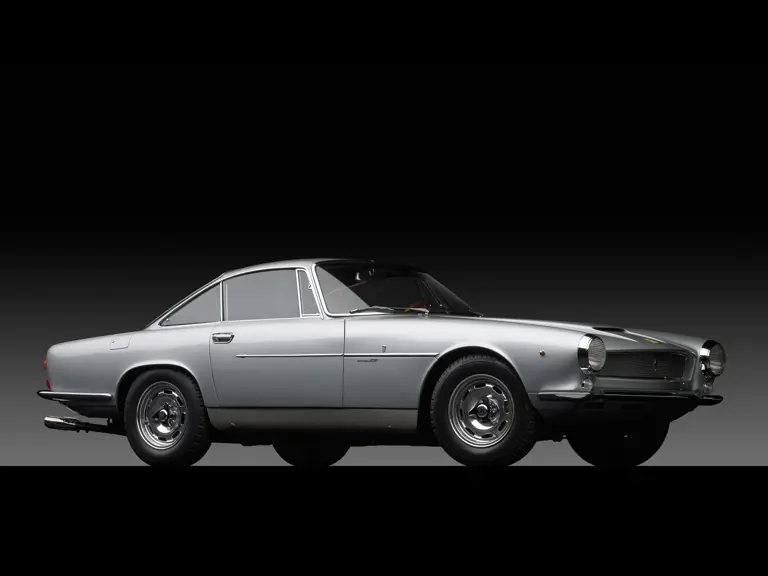
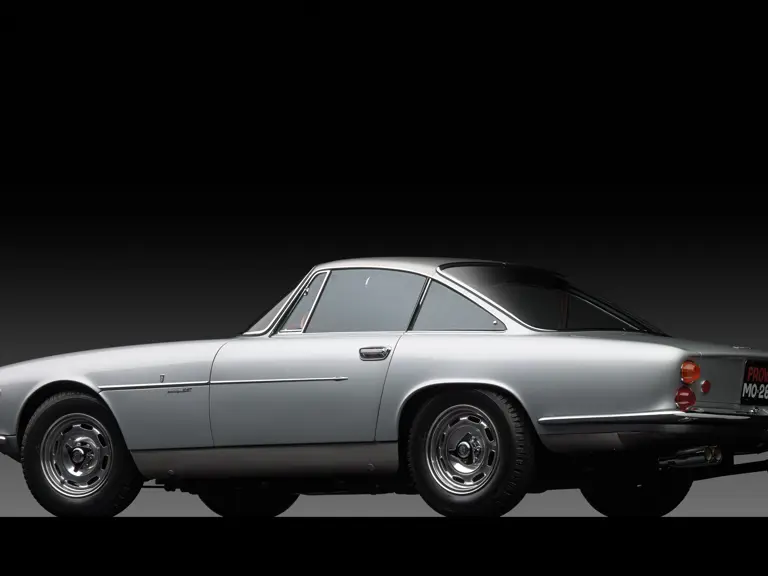
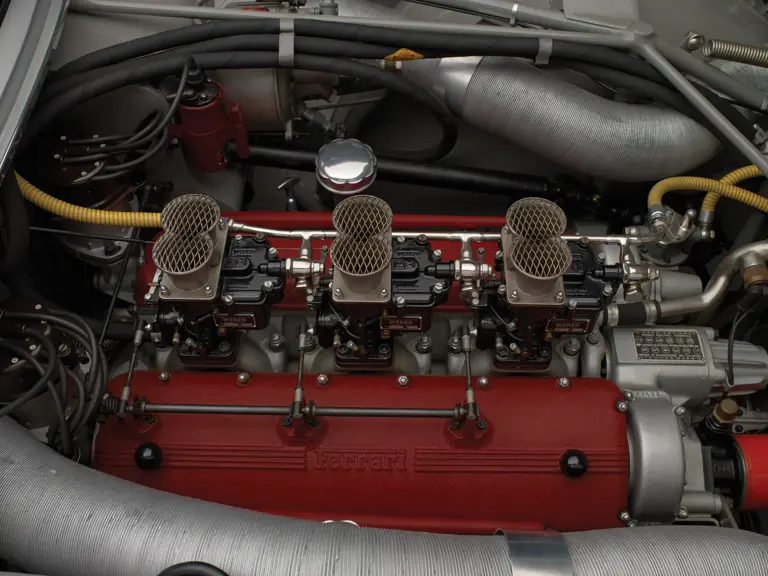
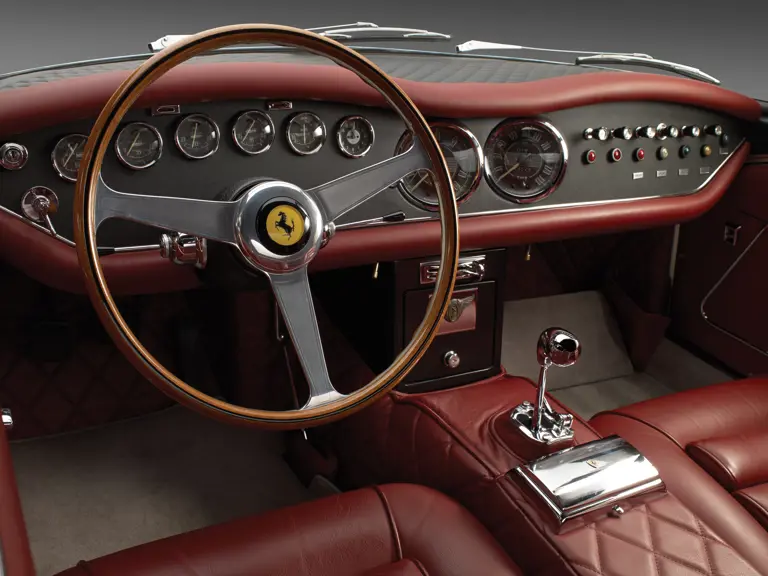




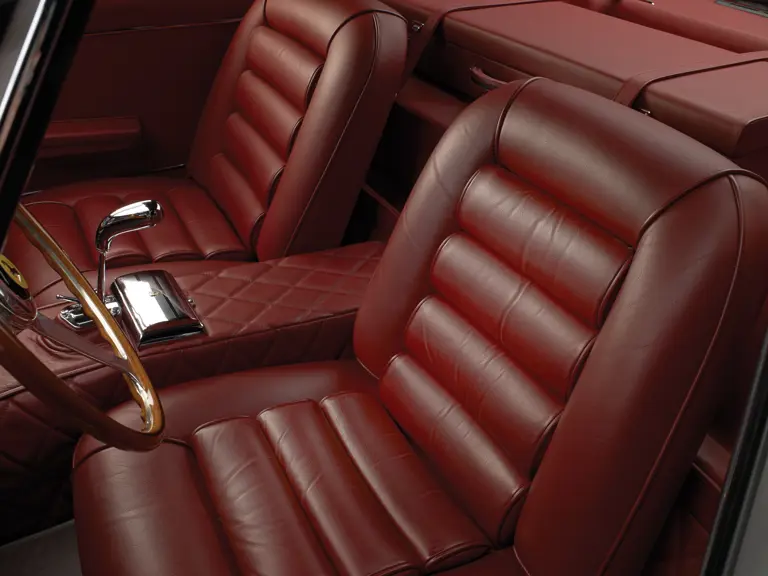
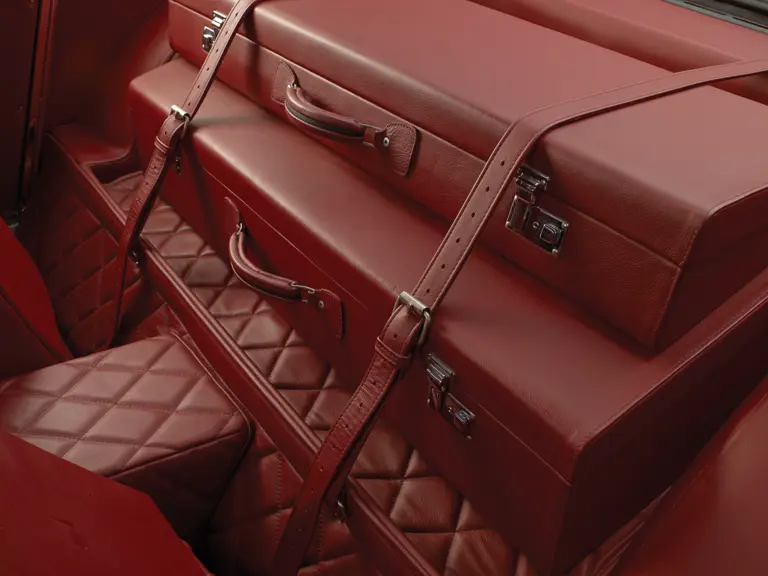
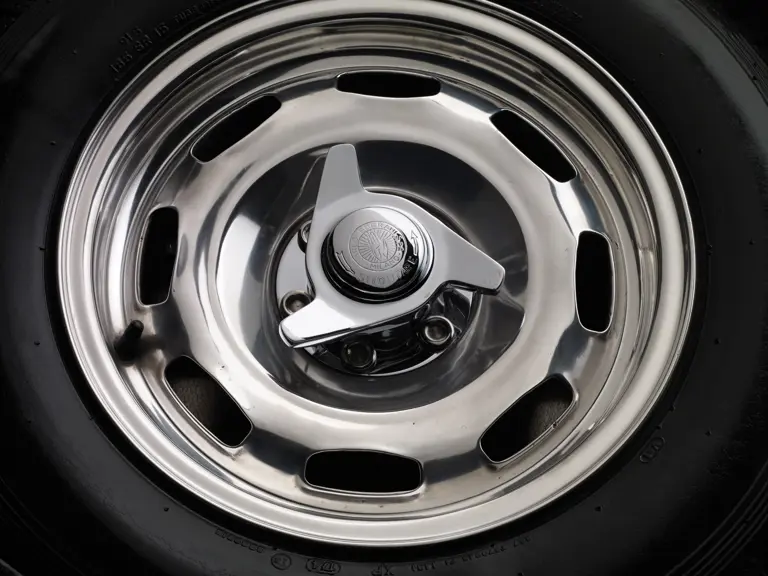
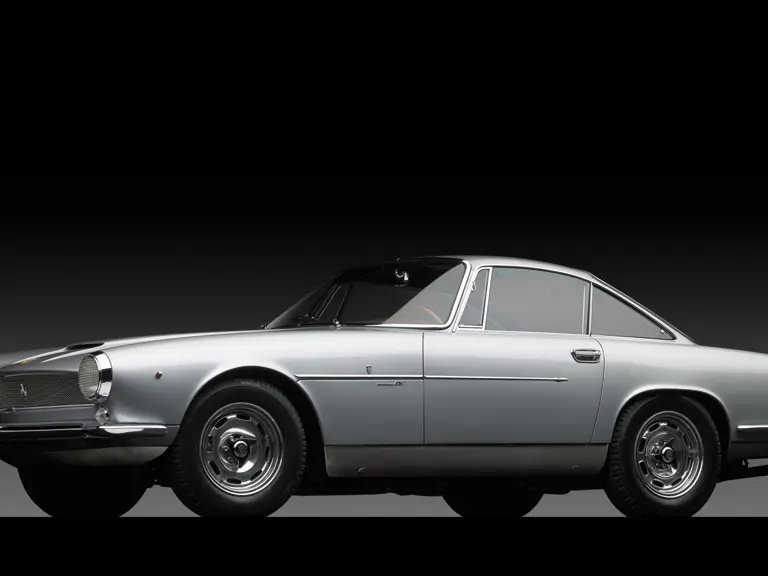
 | New York, New York
| New York, New York
